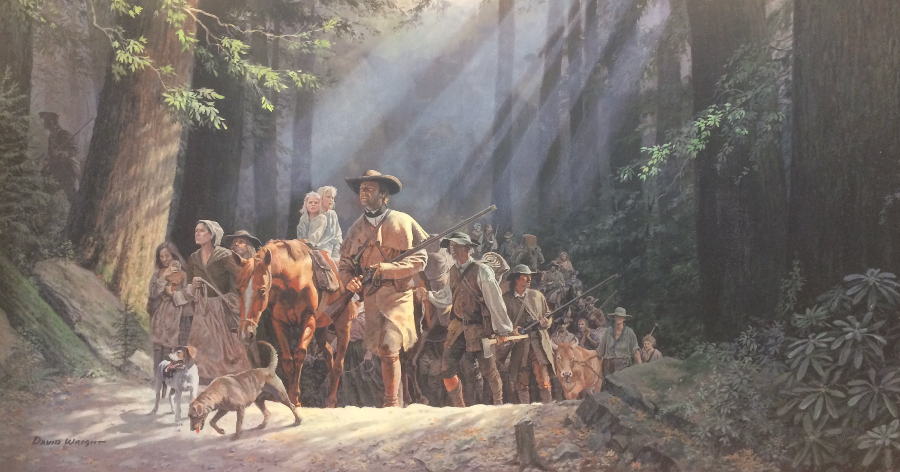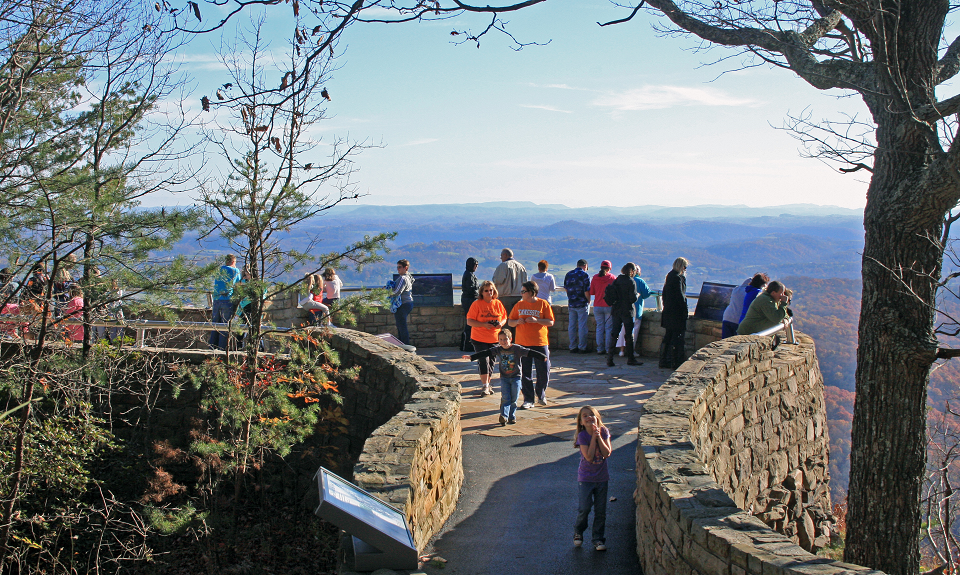Credit the reading of Blood and Treasure by Bob Drury and Tom Clavin for whetting my interest earlier this year to visit Cumberland Gap National Park in Kentucky. The book’s subtitle is Daniel Boone and the Fight for America’s First Frontier. As a history buff, I was well aware of Boone and his part in the early years of the country. And of course, I remember a four-part Disney television series on Boone when I was growing up.
But until the excellent book by Drury and Clavin on Boone, I wasn’t aware of his important role in the opening of the “West,” that at that time was deemed anything west of the Appalachian Mountains.
In 1769, Boone made his first passage through the Cumberland Gap, a natural corridor through the Appalachians. He wasn’t the first to do so, by the way. But six years later, in 1775, Boone led a group of 30 men, marking out a trail through the Gap into Kentucky. He would establish Boonesborough, KY which became a gateway to the West.
After a golf trip to South Carolina, my wife and I headed to Cumberland Gap NP and its Visitors Center in Middlesboro, KY. At the center, we watched two short and informative films which provided a helpful background before our later explorations.
We had the good fortune to meet, chat and be guided for a few hours by ranger Dr. Lucas Wilder. With a PhD in History and a native of the area, Wilder offered fascinating and informative details of Cumberland Gap and how it eventually became part of the National Park system.
One of my first questions to Wilder was why this Gap was so prominent after it was discovered by early Colonial settlers. Wilder cited some other gaps through the Appalachians but none offered the advantages of the Cumberland.
“The other gaps didn’t afford the accessible terrain once you got through it,” said Wilder. “But once passing through the Cumberland, settlers had an easier path traveling north and west.”
In accompanying us on some popular trails including “Pinnacle Overlook,” Wilder explained the geological origins of Cumberland Gap.
“Three factors created the Gap: a fault line, water and wind erosion,” said Wilder, recipient of the Bearss Fellowship Award, named in honor of Edwin “Ed” C. Bearss, the chief historian emeritus of the National Park Service. (The annual award is presented to a scholar researching American history and Wilder developed a Cumberland Gap Civil War driving map.)
“The fault line created a river and this ancient river, aided by wind erosion, created the Gap.” He also debunked the theory, once seen on “The History Channel,” that a meteorite formed the Gap. “In fact, the meteorite made the Gap smaller.”
The two trails we took were easy treks and both afforded marvelous views. Only a quarter mile from the parking lot, Pinnacle Overlook is breathtaking, offering lofty (at 2440 ft.) views of Kentucky, Virginia and Tennessee.
Although our limited time prevented us from other excursions, there is much to do at the National Park. Depending on the time of year, there are guided tours of Gap Cave and the Hensley Settlement. There is also hiking and backpacking as well as backcountry camping in designated sites with a permit.
Birdwatching and appreciating wildlife are popular attractions. This area is also bear country so campers and backpackers must take the usual precautions.
Summer and fall are the busiest seasons to visit. I can only imagine the colors in the fall at Pinnacle Overlook. We visited in March which offered more solitude. And the weather and temperatures were fine, especially by mid-morning.
It’s been said the last words of Daniel Boone, who lived until he was 85, were:
“I am going. My time has come.”
It’s also fitting when considering visiting Cumberland Gap National Park.
For more information, visit https://www.nps.gov/cuga/index.htm
Images courtesy of Cumberland National Park


